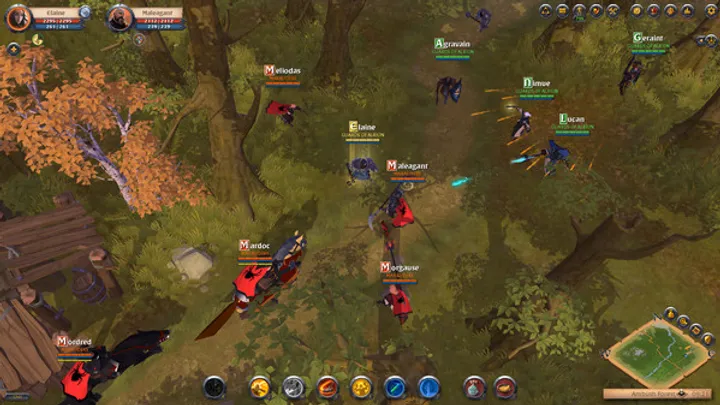Introduction
Surviving in the forest for a long period, such as 99 nights, is no easy feat. It requires preparation, resourcefulness, and a clear mindset. Whether you are imagining a survival challenge, training for outdoor expeditions, or simply learning wilderness survival skills, this guide will help you understand the essentials.
From building shelters to finding food, staying safe, and maintaining your mental strength, each step is crucial. Below, we’ll break down survival strategies into ten key areas, arranged logically as you would experience them in the wild.
1. Preparing Before Entering the Forest
The best way to survive 99 nights in the forest is to prepare before you even arrive. Preparation can mean the difference between comfort and hardship.
Gather essential tools like knives, lighters, a first-aid kit, ropes, and waterproof gear. Mental preparation is just as important — be ready for solitude, changing weather, and physical challenges.
Basic Survival Gear
- Sturdy backpack
- Knife or multi-tool
- Fire-starting kit (matches, lighter, flint)
- Durable rope or paracord
- Sleeping bag or tarp
- Water filter or purification tablets

2. Choosing a Safe Campsite
Location is everything. A good campsite will keep you protected from weather, animals, and other dangers. Look for high, dry ground with access to fresh water.
Avoid areas prone to flooding, near animal trails, or under dead trees that could fall. A safe campsite increases your chances of lasting all 99 nights.
Checklist for Campsites
- Near a clean water source
- Natural wind protection
- Away from predators’ habitats
- Sufficient space for shelter and fire
3. Building Shelter for Long-Term Survival
A strong shelter is your first defense against the elements. For a long stay, build a durable structure using wood, leaves, and rope.
You can start with a simple lean-to or tarp setup, then expand into a log hut or dugout shelter as days progress. Keeping it insulated will help in cold nights.
Shelter Options
- Lean-to shelter for beginners
- A-frame shelter for stability
- Dugout hut for insulation
4. Starting and Maintaining Fire
Fire is critical for warmth, cooking, and protection. Learn multiple ways to start a fire — lighters, flint, or bow-drill methods.
Once lit, keep it under control and maintained. Build a fire pit surrounded by stones, and always have dry wood stocked. Fire boosts morale and keeps predators at bay.
Fire Tips
- Collect both tinder and larger logs
- Keep spare dry wood under your shelter
- Never leave a fire unattended

5. Securing Clean Drinking Water
Surviving without water is impossible beyond a few days. Always prioritize finding and purifying water.
Streams, rivers, and rainfall are your main sources. Purify by boiling, filtering, or using purification tablets. Avoid stagnant water unless no other option exists.
Water Purification Methods
- Boiling for 5–10 minutes
- Filtering through cloth and sand
- Chemical purification tablets
6. Finding and Preparing Food
Food provides energy to endure long nights. In forests, food sources include wild plants, berries, nuts, fish, and small game.
Learn to identify edible plants and avoid poisonous ones. For meat, use traps, fishing lines, or basic hunting techniques. Always cook food to kill bacteria.
Food Sources in the Forest
- Wild berries and nuts
- Edible roots and mushrooms (only if 100% safe)
- Fish and small animals (snares or fishing lines)
7. Protecting Yourself from Wildlife
The forest is home to animals, some of which can pose a threat. While most avoid humans, you need to take precautions.
Store food away from your shelter, make noise when moving to avoid surprising animals, and keep a fire burning at night for protection.
Safety Measures
- Hang food in trees to keep away from bears
- Avoid feeding wild animals
- Carry a sturdy stick or spear as a deterrent
8. Navigating and Staying Oriented
When living in the forest for 99 nights, it’s easy to get lost. Even if you plan to stay put, knowing how to navigate helps you find food and return safely.
Learn to read the sun, stars, and natural signs. Carrying a compass and map makes things much easier. Mark your campsite with visible signs to avoid losing your way.
Navigation Techniques
- Use moss growth (usually thicker on north-facing sides of trees)
- Track the sun’s position for east-west direction
- Create markers along paths with stones or branches

9. Maintaining Health and Energy
Long-term survival depends on maintaining your health. Small injuries or illnesses can turn deadly in the wild if untreated.
Keep wounds clean, avoid risky movements, and prioritize rest. Nutrition is also vital: aim for a balance of proteins, fats, and carbs from available resources.
Health Tips
- Boil or filter all drinking water
- Treat cuts immediately with clean cloth or bandages
- Rest regularly to conserve energy
10. Mental Strength and Longevity
The greatest challenge in surviving 99 nights is mental. Isolation, fear, and monotony can break even strong individuals.
Stay motivated by setting small goals, like improving your shelter or learning new skills. Keep a routine — gather wood in the morning, check traps at noon, cook in the evening. Mental resilience will keep you going when physical resources are limited.
Mental Survival Tips
- Celebrate small achievements
- Keep a journal or carve markings for each night survived
- Focus on the end goal — reaching night 99 safely
Conclusion
Surviving 99 nights in the forest is a true test of human endurance. With the right preparation, smart use of natural resources, and mental determination, it’s possible.
From building shelter and making fire to staying healthy and keeping your mind strong, each step plays a role in your survival journey. By following these strategies, you’ll not only survive but also grow stronger and more confident in your ability to adapt to the wilderness.

















